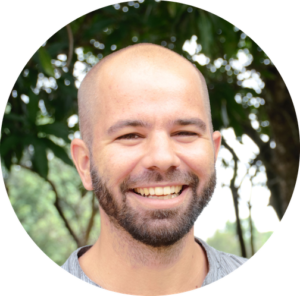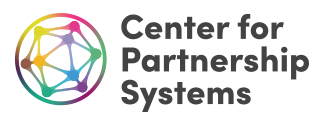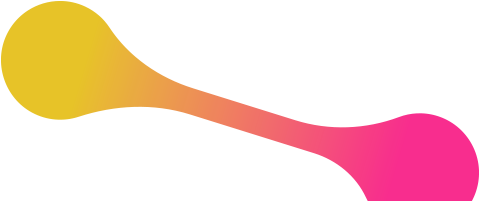March 18, 2021
By Chad McCordic
 Historically in humanitarian aid and international development, poor communities in the global south have not had much choice in the type of aid they?re given. Because of the way most grant funding works, organizations must offer communities specific types of aid or development projects. This type of aid follows a top-down and one-size-fits-all approach to supporting communities. Effectively aid and development, as it operated then, existed in a domination model, a system that reinforces power hierarchies as identified in Riane Eisler?s book The Chalice and The Blade. As we know, most developing countries in the global south were colonized, but, even as these countries established their independence, their relationships between themselves and former colonial powers continued to reinforce domination. Projects were designed for communities, not with communities.
Historically in humanitarian aid and international development, poor communities in the global south have not had much choice in the type of aid they?re given. Because of the way most grant funding works, organizations must offer communities specific types of aid or development projects. This type of aid follows a top-down and one-size-fits-all approach to supporting communities. Effectively aid and development, as it operated then, existed in a domination model, a system that reinforces power hierarchies as identified in Riane Eisler?s book The Chalice and The Blade. As we know, most developing countries in the global south were colonized, but, even as these countries established their independence, their relationships between themselves and former colonial powers continued to reinforce domination. Projects were designed for communities, not with communities.
However, we are seeing a growing trend in international aid and development, one based in partnership and local expertise: community-led development. Community participation has now often become a prerequisite for delivery of aid, meaning that the people being served are viewed not as passive recipients, but rather as active collaborators in addressing poverty reduction. It is a shift towards Partnerism and away from domination. The Lead program is OneVillage Partners? latest effort to even more directly enable communities to address their challenges from multi-dimensional poverty. Last year, OneVillage Partners piloted this new initiative, which trains community members in writing grant proposals, building off the adult training that we do in the Community Action program on project design and the Nurturing Opportunities for Women (NOW) program in budgeting and financial management. Where we once were more hands-on with guiding communities to develop solutions, we are intentionally taking a step back and putting more trust into communities, so that they can develop tailored solutions to address poverty as they see necessary.
We must ask ourselves not what we can for communities, but what can we do with communities to achieve sustainable human development, together.
In Lead, gender-equal groups of volunteers from different communities write proposals for small grant funding to address a specific need in their community or collaborate across villages to work together on a larger regional project. We established transparent criteria to measure the proposed project?s impact and effectiveness, and we fund the projects that meet those standards. The projects funded by OneVillage Partners last year are just wrapping up their initial implementation. In the community of Grima, they successfully rehabilitated their maternal health clinic, including providing 24-hour lights through a newly installed solar panel system. This project will improve healthcare for over 10,000 individuals in the area. In Mamboma, the community not only rehabilitated and electrified their community center, they funded and rolled out several youth-focused business and livelihood workshops.
We should point out that the idea of directly funding grassroots projects is not new (though it is still rare). Sparks Microgrants, an organization that is also part of the Movement for Community-Led Development, has been operating with such a model for nearly a decade now in East Africa. We?ve learned from them and others, and we?ve learned a lot on our own, too. These lessons have helped us shape a stronger program as we begin training new Lead cohorts this month.
One of the key lessons that we learned in the Lead pilot is that regional collaboration can?t happen without a supportive framework in place. Communities can?t work together on projects if there isn?t a direct line of communication between them and local government structures. We have already started to address this by inviting local government representatives to learn about the program as the community does. This connection enables communities to address poverty reduction and improve well being on a larger scale, and ultimately allows them to develop what their vision of a thriving community looks like.
What does it look like to them? It looks like a community that ?meets basic needs,? but also a community ?that shares information, within a village and among neighboring villages.? It looks like ?transparent leadership,? and it?s also a community that has strong ?protection of children, particularly girls?. These are the visions that will lead communities forward. We must ask ourselves not what we can for communities, but what can we do with communities to achieve sustainable human development, together.
Learn More: OneVillage Partners
Register for the March 26 OneVillage Town Hall: Nurturing Opportunities for Women
Photo by Alex Radelich on Unsplash
Chad McCordic is the Country Director for OneVillage Partners. ?Working in Sierra Leone, OneVillage Partners? mission is to catalyze community-led transformation. We partner with rural communities to develop sustainable solutions to their most pressing self-identified challenges. Our programs empower volunteer-leaders to effectively address these challenges and create new opportunities for women?s economic empowerment. Using a participatory model and picture-based tools, we train volunteer-leaders to act as change agents, mobilizing their communities to collectively identify long-term goals and collaborate to achieve them. We accomplish this work through programs that build capacity, with a particular focus on inclusive leadership, women and gender equity, social cohesion, and long-term resiliency”. Learn more at www.onevillagepartners.org.




Leave a Reply